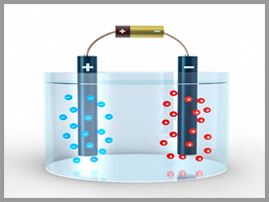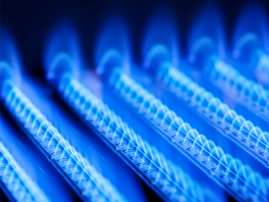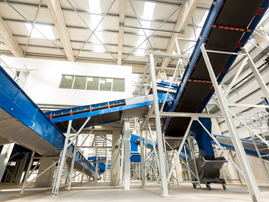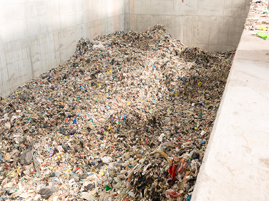Producing hydrogen in Canada

Canada’s rich feedstock reserves, skilled energy labour force and strategic energy infrastructure assets position Canada to become a top global producer of clean hydrogen. Each region in Canada will have a unique mix of production based on local resources and economic factors to meet the growing demand for hydrogen. Canada’s extensive natural gas pipeline network, combined with new storage and distribution assets, can be leveraged to move hydrogen from production to end-use locations.
How is hydrogen produced?
There is a wide range of environmentally friendly ways to produce hydrogen. These include:
- hydro
- wind
- solar
- geothermal
- biomass
- methane pyrolysis
- nuclear
- natural gas with carbon capture, utilization and storage
- deposits of naturally occurring hydrogen
This diversity of sources makes hydrogen a promising energy carrier and enables hydrogen production from coast to coast to coast.
Electrolysis
This process splits water into hydrogen and oxygen using an electric current. The resulting hydrogen is very pure and can be used directly in transportation and other end-use applications such as heating or to power industrial processes. This production method is extremely clean and, considering that 82% of Canada’s electricity supply comes from either renewable or non-GHG-emitting sources, has enormous growth potential in Canada and can help improve the economic viability of variable renewables.
Natural gas
Natural gas can be converted to hydrogen and CO2 via processes such as steam methane reforming or autothermal reforming. If CO2 can be captured and stored, the carbon intensity of the resulting hydrogen can be reduced by up to 98 %, offering a unique opportunity to leverage Canada’s gas reserves to produce low-carbon energy. Methane pyrolysis is another emerging pathway, where methane (CH4) is heated to very high temperatures in the absence of oxygen until its chemical composition changes, splitting into hydrogen and solid carbon.
Biomass gasification
Biomass gasification, a stable technology that uses high temperature steam to break down biomass (forest, agricultural waste or dry organic waste) into hydrogen and other products of combustion, is considered both renewable and carbon-neutral. If it is coupled with carbon capture and storage, the process becomes carbon-negative.
Landfill, sewage, and agricultural gas reformation
Another potential source of hydrogen from biomass is the use of the steam methane reformation process resulting from the breakdown of organic matter in landfills, sewage treatment plants and agricultural waste sites.
Canada’s hydrogen production potential
The array of production methods offers vast economic opportunities across the country. The pathways that will be adopted in each region of Canada depends on:
- the availability of feedstocks
- energy inputs
- suitable sites for carbon capture and storage
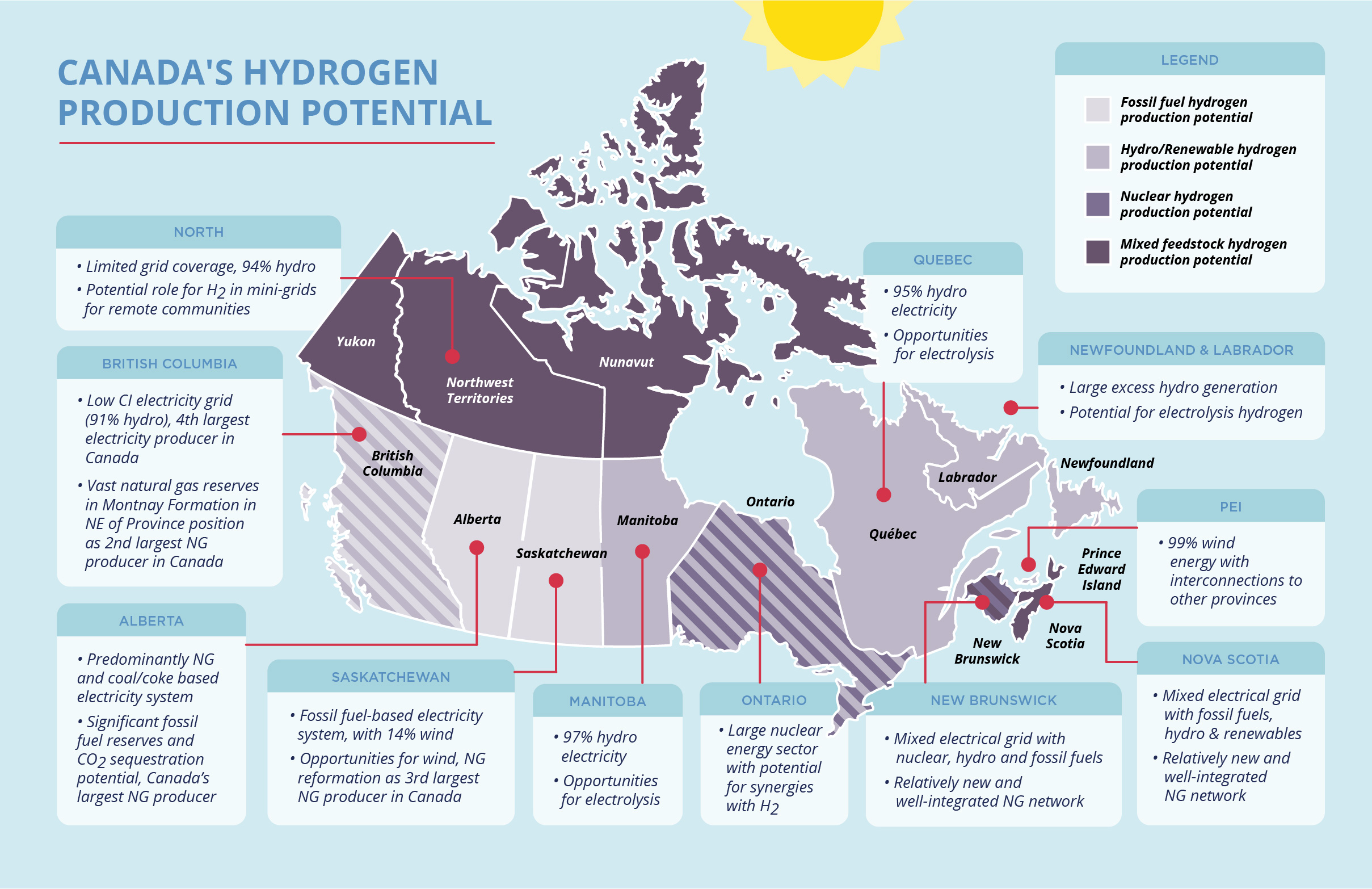
Text version: Canada’s hydrogen production potential
Legend
Colour 1: Fossil fuel hydrogen production potential
Colour 2: Hydro/renewable hydrogen production potential
Colour 3: Nuclear hydrogen production potential
Colour 4: Mixed feedstock hydrogen production potential
Hydrogen production potential by region or province
North: Mixed feedstock hydrogen production potential (colour 4)
- Limited grid coverage, 94% hydro
- Potential role for H2 in mini-grids for remote communities
British Columbia: Fossil fuel hydrogen production potential and hydro/renewable hydrogen production potential (colour 1 and colour 2)
- Low Cl electricity grid (91% hydro), 4th largest electricity producer in Canada
- Vast natural gas reserves in Montnay Formation in NE of province position it as 2nd largest NG producer in Canada
Alberta: Fossil fuel hydrogen production potential (colour 1)
- Predominately NG and coal/coke-based electricity system
- Significant fossil fuel reserves and CO2 sequestration potential, Canada’s largest NG producer
Saskatchewan: Fossil fuel hydrogen production potential (colour 1)
- Fossil fuel-based electricity system, with 14% wind
- Opportunities for wind, NG reformation as 3rd largest NG producer in Canada
Manitoba: Hydro/renewable hydrogen production potential (colour 2)
- 97% electricity hydro
- Opportunities for electrolysis
Ontario: Hydro/renewable hydrogen production potential and nuclear hydrogen production potential (colour 2 and colour 3)
- Large nuclear energy sector with potential for synergies with H2
Quebec: Hydro/renewable hydrogen production potential (colour 2)
- 95% hydro electricity
- Opportunities for electrolysis
New Brunswick: Nuclear hydrogen production potential and mixed feedstock hydrogen production potential (colour 3 and colour 4)
- Mixed electrical grid with nuclear, hydro and fossil fuels
- Relatively new and well-integrated NG network
Nova Scotia: Mixed feedstock hydrogen production potential (colour 4)
- Mixed electrical grid with fossil fuels, hydro and renewables
- Relatively new and well-integrated NG network
Prince Edward Island: Hydro/renewable hydrogen production potential (colour 2)
- 99% wind energy with interconnections to other provinces
Newfoundland and Labrador: Hydro/renewable hydrogen production potential (colour 2)
- Large excess hydro generation
- Potential for electrolysis hydrogen
Page details
- Date modified:
